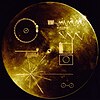Partita for Violin No. 3 (Bach)
In this article we will delve into the fascinating world of Partita for Violin No. 3 (Bach), exploring its origins, evolution and relevance today. From its first mentions to its impact on modern society, Partita for Violin No. 3 (Bach) has captured the attention and interest of many people over the years. Through a detailed and exhaustive analysis, we will examine different aspects related to Partita for Violin No. 3 (Bach), including its historical importance, its influence on popular culture, and its role in everyday life. With a critical and insightful look, we will discover how Partita for Violin No. 3 (Bach) has left a lasting mark in various areas, remaining a topic of interest and discussion today. Get ready to embark on a journey of discovery and learning about Partita for Violin No. 3 (Bach)!

The Partita No. 3 in E major for solo violin, BWV 1006.1 (formerly 1006), is the last work in Johann Sebastian Bach's set of Sonatas and Partitas. It consists of the following movements:
It takes about 15–18 minutes to perform.
Bach transcribed the Partita as a suite, cataloged as BWV 1006.2 (formerly 1006a). The music critic Wilhelm Tappert claimed in 1900 that this arrangement was for lute solo, but present research[by whom?] indicates that it was for an unspecified instrument.
The Preludio consists almost entirely of semiquavers (i.e. sixteenth notes). The Preludio was also transcribed by Bach for use in two cantatas:
- the sinfonia which opens the second part of the 1729 cantata Herr Gott, Beherrscher aller Dinge, BWV 120a.
- the opening sinfonia, scored for obbligato organ, oboes, trumpets and strings, of the 1731 cantata Wir danken dir, Gott, wir danken dir, BWV 29, in D major

The "Gavotte en Rondeau" is included on the Voyager Golden Record and often heard in TV or radio programs.
In 1933 Sergei Rachmaninoff transcribed for piano (and subsequently recorded) the Preludio, Gavotte, and Giga from this partita (as TN 111/1). An arrangement of the Preludio for jazz trio by Jacques Loussier appeared on his Reflections of Bach album of 1987 and was used as the theme of the BBC Radio 4 music quiz show Counterpoint.
References
- ^ "Partita no. 3, E BWV 1006.1; BWV 1006". Bach Digital. Leipzig: Bach Archive; et al. 2020-04-09.
- ^ "Suite, E (arr. of BWV 1006.1) BWV 1006.2; BWV 1006a". Bach Digital. Leipzig: Bach Archive; et al. 2020-04-29.
- ^ Titmuss, Clive, "The Myth of Bach's Lute Suites", in Classical Guitar website, accessed 27 April 2015
- ^ Murmurs of Earth: The Voyager Interstellar Record. New York: Ballantine Books. 1979. p. 170. ISBN 978-0345283962.
- ^ Rowat, Robert (2 October 2018). "Here's the arrangement of Bach's Violin Partita in E Major you didn't know you needed". CBC Music. Retrieved 5 September 2021.
- ^ "Jacques Loussier: Bach's Instrumental Works". Bach Cantatas Website. Retrieved 17 April 2022.
- ^ "Counterpoint". BBC Radio 4. Retrieved 17 April 2022.
External links
- Manuscript (fair copy) in Bach's hand of the Partita at the Bach Digital project
- 6 Violin Sonatas and Partitas, BWV 1001–1006: Scores at the International Music Score Library Project
- Blair Johnston. Johann Sebastian Bach: Partita for solo violin No. 3 in E major, BWV 1006 at AllMusic
- Performance by violinist Karen Gomyo from the Isabella Stewart Gardner Museum in MP3 format
- Animated score on YouTube, Arthur Grumiaux

